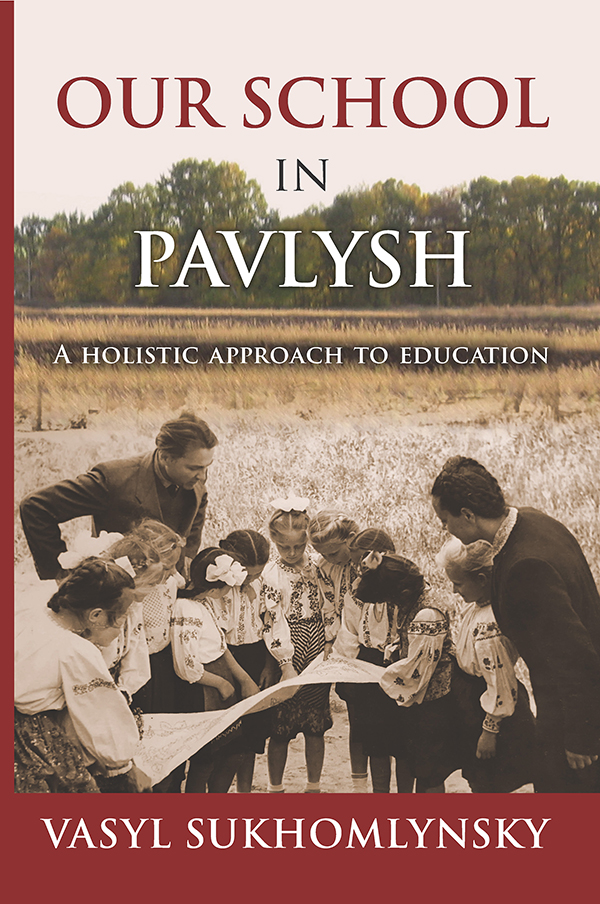Our School in Pavlysh describes the inspirational work carried out at Pavlysh Secondary School in central Ukraine during the 1960s. For Sukhomlynsky’s readership of teachers and school principals, the word ‘Pavlysh’ stood for creative thought, inspiration, and the hope of finding answers to troubling questions. Raising his school from the ashes of World War II, Sukhomlynsky created a system of education that was deeply embedded in the natural environment and that fostered the qualities of curiosity, empathy and creativity. One of the thousands of visitors to Pavlysh, a school principal from Armenia, wrote:
‘I have spent only one day in this remarkable school where so much is happening, but I have gained as much as I did in four years at the institute.’
Another visiting principal wrote:
‘Pavlysh Secondary School should be renamed a university! We say this quite responsibly: here a feeling of wonder and admiration comes over anyone with the slightest love for children and schools.’
Students enrolling in Sukhomlynsky’s school became part of a vibrant learning community in which teachers, parents, community members, and the students themselves all played a role in educating each other. Dozens of clubs operated after school, most attended by children of varying ages, and the older children played a significant role in educating younger children. These informal, extracurricular activities were extremely important in developing children’s talents, building their self-esteem, and providing an experiential background for formal studies. In this environment students became autonomous, lifelong learners.
Although Sukhomlynsky was working in Soviet Ukraine, many of his concerns are universal, and still relevant to us today. Themes treated in the book include:
• Implementing professional development for teachers through long term mentoring arrangements and regular staff discussions.
• Focusing on understanding the psychology of each individual student and adjusting educational methodologies accordingly.
• Ensuring students enjoy optimum health, to provide a foundation for all other areas of development. This was done through comprehensive health screening, including screening of sight and hearing; through liaising with families; and through making student health the number one priority throughout all the years of schooling.
• Teaching students to be resilient and self-disciplined, through practical training in following routines, through liaising with families, and through setting appropriately challenging activities.
• Motivating students to learn through emotions of wonder and excitement, often by taking students out into natural surroundings. Providing first-hand experiences as the basis for language development and thought (gradually moving from the concrete to the abstract).
• Educating students to be custodians of the natural environment and responsible citizens, through practical outdoor activities.
• Fostering empathy and supportive peer relationships among students, through personal example and through group activities.
• Reducing administrative loads to make sure teaching staff have sufficient free time to rest, to read, and to develop their knowledge.
• Utilising extracurricular activities and multi-age peer tutoring to foster intellectual and vocational development.
• Running extensive parenting programs for the parents at his school, as a way of integrating the efforts of school and families. Sessions were run twice a month in groups based on the age of the parents’ children, and offered in-depth knowledge about child development. They also provided recommendations to parents about diet and routines.
Sukhomlynsky’s approach can still offer inspiration to educators in the twenty-first century, as we face the challenges of the Anthropocene. This new translation provides an excellent complement to Alan Cockerill’s earlier translation of Sukhomlynsky’s My Heart I Give to Children.
